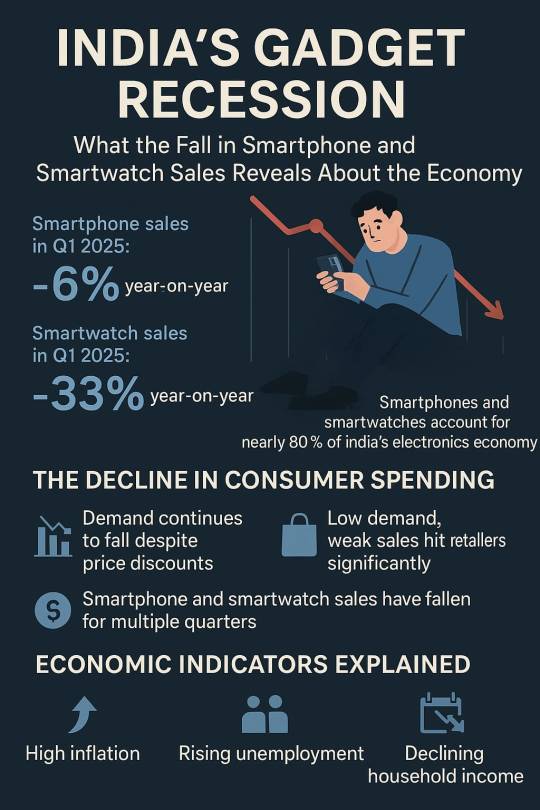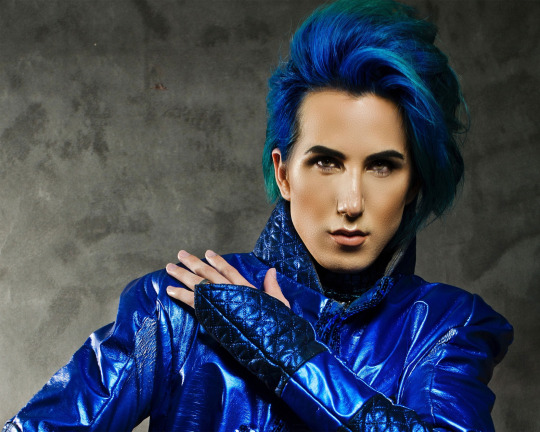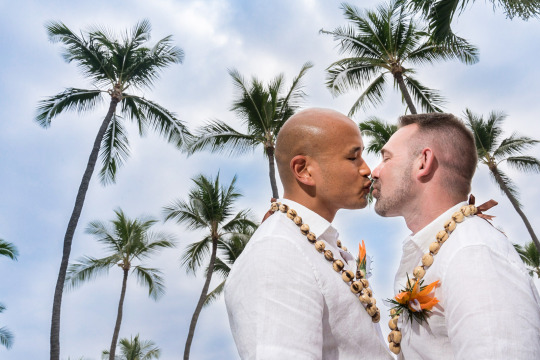#PLI India
Explore tagged Tumblr posts
Text
How Government Reforms Are Reshaping FDI in India
Introduction
The history of Indian economic growth has strongly been associated with the inflow of Foreign Direct Investment (FDI). The Indian government has been making efforts to liberalize the FDI regime in the last decade, and this has made the country an international investing paradise. In a bid to enter India as a business, one must appreciate the effects of government reforms.
These policy changes are not only attracting foreign investment but have also led to easing of processes, as well as the opening of business ventures to other sectors. They are redefining the entry of international businesses into India. How strategic government plans are transforming FDI in India The efficacy of FDI and global investors in India are opening new avenues with the help of serious strategic government plans.
1. Liberalization of Sectoral Caps
Liberalization of the FDI restrictions has also occurred in many critical sectors, which has been one of the most significant reforms. Even industries that were once highly controlled, like the defense, insurance, telecom, and retail industries, have experienced their FDI limits being hugely reduced. For example:
Defense: 74 percent FDI to be permitted via automatic route
Insurance: the FDI ceiling was raised to 74 percent (as against 49 percent)
Single-brand retailing: 100 percent under automatic route.
Such shifts make a very strong statement to international investors. India is business-friendly and in the process of minimizing its bureaucracy in some of the key sectors.
2. Ease of Doing Business and Digitization
The increased attention by the government to the ease of doing business has had a direct effect on the FDI inflow. India has moved far up in the ease of doing business index with the World Bank, and this is owing to a number of important reform measures:
The introduction of the Goods and Services Tax (GST) that led to a unified market across the country
Digital India, in which the regulatory and compliance processes became easier
Introduction of web-based portals such as the Foreign Investment Facilitation Portal (FIFP) in order to speed up the approval of FDIs
Such reforms have simplified industries, minimized red tape, and increased the faith of investors. Entering the Indian market has now become transparent, quick, and less complicated than it used to be in the earlier days in the minds of companies that intend to venture into it.
3. Incentive Schemes to Attract Investment
The government has also launched a number of incentive schemes in order to enhance FDI in India further:
Production Linked Incentive (PLI) Schemes in different sectors, which motivate foreign businesses to establish a manufacturing unit in India
Startup India and Make in India initiatives, which were designed to promote innovation and local entrepreneurship
Specific industry packages in the areas of electronics, pharmaceuticals, automotive, and textiles in order to bring in strategic global investments
Such programs are not merely attracting foreign investment but are motivating businesses to come up with enduring relations together with exchanges of technology and employment. India is perceived by the international businesses to be a promising destination both as a place of consumption and production.
4. Streamlined Approvals and Policy Clarity
The foreign investment has been dampened by uncertainty in policy. To curb this, the Indian government has undertaken steps in order to provide more clarity and consistency on their FDI policies:
Clearly spelled out rules and eligibility criteria within the FDI framework
The timely revision of the policy by issuance of the Consolidated FDI Policy, restaurant regulations are easily accessible and comprehensible.
Formation of facilitation centers such as Invest in India that provides one-window services to foreign investors
This strategy has not only aided in lowering the risk but also in better planning of strategic operations of international-based firms seeking to invest in India.
Conclusion
The FDI market in India is changing shape due to the reforms by the government, which is creating a better environment conducive to business. Relaxed FDI restrictions, simplification of the process, digital initiatives, and incentive programs are some of the changes that are making India a popular destination of international investors.
It is the best time for businesses willing to invest in India. The environment in itself is very helpful, the policies are conducive, and the potential for growth is just astronomical.
At Fox&Angel we also take our clients through the vibrant Indian market, helping them with the business strategy of how to enter India.
Contact us today to see how we can assist you in the process of becoming well planted in India.
#FDI in India#Invest in India#Government Reforms#Business Expansion India#Fox&Angel#Foreign Investment#Ease of Doing Business#Make in India#Startup India#PLI India
0 notes
Text
FDI in India: Unleashing Growth Potential in 2024

Introduction
Foreign Direct Investment (FDI) has been a cornerstone of India's economic growth, driving industrial development, technological advancement, and job creation. As we move into 2024, the FDI landscape in India is poised for substantial growth, bolstered by a favorable policy environment, a burgeoning consumer market, and strategic government initiatives. This blog delves into the potential of FDI in India for 2024, examining the key sectors attracting investment, the regulatory framework, and the strategies investors can employ to navigate this dynamic market.
The Significance of FDI in India
FDI is crucial for India’s economic progress, providing the capital, technology, and expertise needed to enhance productivity and competitiveness. It facilitates the integration of India into the global economy, stimulates innovation, and creates employment opportunities. Over the past decade, India has emerged as one of the top destinations for FDI, reflecting its economic resilience and strategic importance.
Historical Context and Recent Trends
India's FDI inflows have shown a consistent upward trend, reaching record levels in recent years. According to the Department for Promotion of Industry and Internal Trade (DPIIT), India attracted FDI inflows worth $81.72 billion in 2021-22, highlighting its strong appeal among global investors. The sectors that have traditionally attracted significant FDI include services, telecommunications, computer software and hardware, trading, construction, and automobiles.
Key Factors Driving FDI in India
1. Economic Growth and Market Size
India's economy is one of the fastest-growing in the world, with a projected GDP growth rate of around 6-7% in 2024. The country’s large and youthful population offers a vast consumer base, making it an attractive market for foreign investors. The rising middle class and increasing disposable incomes further fuel demand across various sectors.
2. Strategic Government Initiatives
The Indian government has implemented several initiatives to make the country more investor-friendly. Programs like 'Make in India,' 'Digital India,' and 'Startup India' are designed to boost manufacturing, digital infrastructure, and entrepreneurial ventures. These initiatives, coupled with reforms in labor laws and ease of doing business, create a conducive environment for FDI.
3. Infrastructure Development
Significant investments in infrastructure development, including roads, railways, ports, and urban infrastructure, enhance connectivity and logistics efficiency. The development of industrial corridors and smart cities further improves the attractiveness of India as an investment destination.
4. Favorable Regulatory Environment
India has progressively liberalized its FDI policy, allowing 100% FDI in most sectors under the automatic route. This means that foreign investors do not require prior government approval, simplifying the investment process. The government has also streamlined regulatory procedures and improved transparency to facilitate ease of doing business.
Key Sectors Attracting FDI in 2024
1. Technology and Digital Economy
The technology sector continues to be a magnet for FDI, driven by India’s growing digital ecosystem, skilled workforce, and innovation capabilities. Investments in software development, IT services, and emerging technologies like artificial intelligence, blockchain, and cybersecurity are expected to surge.
2. Manufacturing and Industrial Production
The 'Make in India' initiative aims to transform India into a global manufacturing hub. Key sectors attracting FDI include electronics, automobiles, pharmaceuticals, and renewable energy. The Production-Linked Incentive (PLI) schemes introduced by the government provide financial incentives to boost manufacturing and attract foreign investment.
3. Healthcare and Biotechnology
The COVID-19 pandemic has underscored the importance of healthcare infrastructure and innovation. India’s pharmaceutical industry, known for its generic drug production, continues to attract substantial FDI. Additionally, biotechnology and medical devices are emerging as significant sectors for investment.
4. Infrastructure and Real Estate
Infrastructure development is critical for sustaining economic growth. Sectors like transportation, logistics, urban development, and real estate offer significant investment opportunities. The government's focus on developing smart cities and industrial corridors presents lucrative prospects for foreign investors.
5. Renewable Energy
With a commitment to achieving net-zero emissions by 2070, India is focusing on renewable energy sources. The solar, wind, and hydroelectric power sectors are witnessing substantial investments. The government's policies and incentives for green energy projects make this a promising area for FDI.
Regulatory Framework for FDI in India
Understanding the regulatory framework is essential for investors looking to enter the Indian market. The key aspects of India's FDI policy include:
1. FDI Policy and Routes
FDI in India can be routed through the automatic route or the government route. Under the automatic route, no prior approval is required, and investments can be made directly. Under the government route, prior approval from the concerned ministries or departments is necessary. The sectors open to 100% FDI under the automatic route include:
- Infrastructure
- E-commerce
- IT and BPM (Business Process Management)
- Renewable Energy
2. Sectoral Caps and Conditions
While many sectors allow 100% FDI, some have sectoral caps and conditions. For example:
- Defense: Up to 74% FDI under the automatic route, and beyond 74% under the government route in certain cases.
- Telecommunications: Up to 100% FDI allowed, with up to 49% under the automatic route and beyond that through the government route.
- Insurance: Up to 74% FDI under the automatic route.
3. Regulatory Authorities
Several regulatory authorities oversee FDI in India, ensuring compliance with laws and policies. These include:
- Reserve Bank of India (RBI): Oversees foreign exchange regulations.
- Securities and Exchange Board of India (SEBI): Regulates investments in capital markets.
- Department for Promotion of Industry and Internal Trade (DPIIT): Formulates and monitors FDI policies.
4. Compliance and Reporting Requirements
Investors must comply with various reporting requirements, including:
- Filing of FDI-related returns: Periodic filings to RBI and other regulatory bodies.
- Adherence to sector-specific regulations: Compliance with industry-specific norms and guidelines.
- Corporate Governance Standards: Ensuring adherence to governance standards as per the Companies Act, 2013.
Strategies for Navigating the FDI Landscape
1. Thorough Market Research
Conducting comprehensive market research is crucial for understanding the competitive landscape, consumer behavior, and regulatory environment. Investors should analyze market trends, identify potential risks, and evaluate the long-term viability of their investment.
2. Partnering with Local Entities
Collaborating with local businesses can provide valuable insights into the market and help navigate regulatory complexities. Joint ventures and strategic alliances with Indian companies can facilitate market entry and expansion.
3. Leveraging Government Initiatives
Tapping into government initiatives like 'Make in India' and PLI schemes can provide financial incentives and support for setting up manufacturing units and other projects. Staying updated on policy changes and leveraging these initiatives can enhance investment returns.
4. Ensuring Legal and Regulatory Compliance
Compliance with local laws and regulations is paramount. Engaging legal and financial advisors with expertise in Indian regulations can ensure that all legal requirements are met. This includes obtaining necessary approvals, adhering to reporting norms, and maintaining corporate governance standards.
5. Focusing on Sustainable Investments
Given the global emphasis on sustainability, investments in green technologies and sustainable practices can offer long-term benefits. The Indian government’s focus on renewable energy and sustainable development provides ample opportunities for environmentally conscious investments.
Conclusion
India's FDI landscape in 2024 is ripe with opportunities across various sectors, driven by robust economic growth, strategic government initiatives, and a favorable regulatory environment. However, navigating this dynamic market requires a deep understanding of the legal and regulatory framework, thorough market research, and strategic partnerships.
For investors looking to unleash the growth potential of their investments in India, staying informed about policy changes, leveraging government incentives, and ensuring compliance with local laws are critical. By adopting a strategic approach and focusing on sustainable investments, foreign investors can tap into the immense opportunities offered by the Indian market and contribute to its economic transformation.
In conclusion, FDI in India in 2024 presents a compelling opportunity for global investors. With the right strategies and guidance, investors can navigate the complexities of the Indian market and achieve significant growth and success.
This post was originally published on: Foxnangel
#fdi in india#fdi investment in india#foreign direct investment in india#economic growth#foreign investors#startup india#pli schemes#renewable energy#indian market#foxnangel
2 notes
·
View notes
Text
Waaree Renewable Technologies Limited to Supply 200 MW Solar Modules to ACCIONA for Rajasthan Project
Waaree Renewable Technologies Limited (WRTL), a prominent player in India’s solar EPC and module supply segment, has secured a major order from global renewable energy leader ACCIONA Energia to supply 200 MW of solar PV modules for a key project in Rajasthan. This significant supply contract reflects WRTL’s growing stature as a trusted solar partner, both domestically and internationally. The…

View On WordPress
#200 mw solar modules#clean energy india#co2 offset solar#epc solar contracts#green energy india#indian solar epc#make in india solar#pli solar india#rajasthan solar project#renewable project india#solar manufacturing india#solar partnership 2025#solar project update#waaree acciona project#waaree module supply#Waaree Renewable Technologies#wrtl#wrtl acciona deal#wrtl global partnerships#wrtl solar growth
0 notes
Text
Jobs Alert : ಅಂಚೆ ಇಲಾಖೆಯಲ್ಲಿ ವಿಮಾ ಪ್ರತಿನಿಧಿಗಳ ನೇರ ನೇಮಕಾತಿ, ಜುಲೈ 22ಕ್ಕೆ ನೇರ ಸಂದರ್ಶನ, ನೀವೂ ಭಾಗವಹಿಸಿ…!
Jobs Alert – ಮೈಸೂರು ಜಿಲ್ಲೆಯ ನಂಜನಗೂಡು ಅಂಚೆ ವಿಭಾಗವು ಅಂಚೆ ಜೀವ ವಿಮೆ (PLI) ಮತ್ತು ಗ್ರಾಮೀಣ ಅಂಚೆ ಜೀವ ವಿಮೆ (RPLI) ಯೋಜನೆಗಳ ಪ್ರತಿನಿಧಿಗಳಾಗಿ ಕೆಲಸ ಮಾಡಲು ಆಸಕ್ತರನ್ನು ಆಹ್ವಾನಿಸಿದೆ. ಇದು ನಿರುದ್ಯೋಗಿಗಳಿಗೆ, ಸ್ವಯಂ ಉದ್ಯೋಗಿಗಳಿಗೆ ಮತ್ತು ಇತರೆ ಕ್ಷೇತ್ರಗಳಲ್ಲಿ ಕೆಲಸ ಮಾಡುವವರಿಗೆ ಒಂದು ಅತ್ಯುತ್ತಮ ಅವಕಾಶವಾಗಿದೆ. ಇದೇ ಜುಲೈ 22 ರಂದು ನೇರ ಸಂದರ್ಶನ ಕರೆಯಲಾಗಿದೆ. ಹುದ್ದೆಗೆ ಸಂಬಂಧಿಸಿದ ಪ್ರಮುಖ ಮಾಹಿತಿಯನ್ನು ಈ ಸುದ್ದಿಯ ಮೂಲಕ ಹಂಚಿಕೊಳ್ಳಲಾಗಿದೆ. Jobs Alert –…
#Government Job Mysuru#Insurance Careers India#Mysuru Employment News#Nanjangud Post Office Recruitment#PLI RPLI Jobs Mysuru#Postal Insurance Agents#Postal Life Insurance Karnataka#RPLI Agent Jobs#Rural Job Opportunities Karnataka#Self Employment Opportunities Mysuru#SSLC Job Karnataka#Walk-in Interview July 2025
0 notes
Text
#Automotive Skills Development Council - India (ASDC)#Ministry of Heavy Industries (MHI)#AutoSectorIndia#PLI#EVMobility#SkillDevelopment#ElectricVehicles#FutureOfWork#MakeInIndia#GreenMobility#DigitalManufacturing#electricvehiclesnews#evtimes#autoevtimes#evbusines
0 notes
Text
gandhi-slams-make-in-india-says-modi-masters-slogans-not-solutions | 'नारे लगाने की कला में महारत, लेकिन...', मेक इन इंडिया को लेकर PM मोदी पर राहुल गांधी का अटैक
[NEWS] Rahul Gandhi attacks on PM Modi: लोकसभा में विपक्ष के नेता और कांग्रेस सांसद राहुल गांधी ने शनिवार को प्रधानमंत्री नरेंद्र मोदी क�� “मेक इन इंडिया” पहल की तीखी आलोचना की. उन्होंने कहा कि 2014 में बड़े वादों के साथ शुरू की गई इस योजना से न तो देश में कारखानों की बाढ़ आई, न ही युवाओं को रोजगार मिला. उल्टा, देश की विनिर्माण क्षमता घटकर अब सिर्फ 14% रह गई है और युवाओं में बेरोजगारी रिकॉर्ड…
#BJP#China imports#Congress#factory growth#India manufacturing#indian economy#make in india#Make in India Scheme#Modi government criticism#Modi slogans#PLI#PLI scheme#PM Modi#Rahul Gandhi#Rahul Gandhi vs PM Modi#youth unemployment#चीन से आयात#पीएलआई योजना#फैक्ट्री विकास#भारत की मैन्युफैक्चरिंग#भारतीय अर्थव्यवस्था#मेक इन इंडिया#मोदी के नारे#मोदी सरकार की आलोचना#युवा बे��ोजगारी#राहुल गांधी
0 notes
Text
India’s Smartphone and Smartwatch Sales Drop in 2025: What It Means for the Economy
Smartphones once symbolized India’s rising aspirations: mobility, modernity, and middle-class ambition. But in early 2025, that symbol cracked. According to IDC India, smartphone sales fell 6% year-on-year in Q1, while smartwatch shipments plummeted 33%. These aren’t just numbers. They are signals that something deeper is shifting in the Indian economy.
For a country that recently sold over 40 million smartphones each quarter, this drop speaks volumes. Together, smartphones and smartwatches make up nearly 80% of India’s electronics revenue. When demand for them crashes, it shakes not just stores but supply chains, service networks, financing models, and the broader electronics ecosystem.

#India smartphone sales 2025#smartwatch sales drop#Indian electronics market#smartphone market slowdown#IDC India#mobile sales report#Indian economy 2025#consumer demand India#PLI scheme#Apple India market
0 notes
Text
Buy and Sell Lava Unlisted Shares Online in India

Looking to tap into high-growth opportunities before they hit the stock exchanges? Lava International, a leading Indian mobile handset brand, offers a compelling case for pre-IPO investors. With its innovative product lineup, strong domestic presence, and ambitious global expansion plans, Lava Unlisted Shares are gaining traction in the unlisted market. At Rits Capital, we make it seamless for you to buy and sell these shares online, unlocking exclusive investment potential.
Lava International
“A Leading Force in India’s Mobile Industry”
Have you ever heard of a brand that has established itself in a highly competitive environment, alongside giants like Nokia, Samsung, and others? Lava International is one such brand that has carved out a significant position in the Indian mobile phone sector. Despite facing tough competition from industry leaders, Lava has successfully gained a strong foothold by focusing on affordable smartphones and feature phones, catering to the needs of India’s vast rural and semi-urban populations. Founded in 2009 by Vishal Sehgal, Hari om sai, Sudhir Kumar, and Shailendra Singh, Lava International Unlisted Shares has proven that with the right management and business model, a homegrown brand can thrive in competitive markets. Operating in over 25 international markets, including South Asia, the Middle East, Africa, and Latin America, Lava has successfully captured a 25% stake in the Indian feature phone market.
Key Highlights of Lava Internatinol Unlisted Share
Lava International: Growth, Strengths & Future Prospects
Strong Market Presence & Brand Recognition
Feature Phone Dominance: 25% market share in 2023.
Smartphone Expansion: Focus on affordable 5G models to attract young users.
Brand Strengthening: Investing in marketing and customer engagement to compete with global brands.
Manufacturing & R&D Capabilities
Advanced Production Hub: Noida facility with 70% capacity utilization under Make in India.
R&D Innovation: Dedicated research center for next-gen mobile technologies.
Localized Supply Chain: Increasing domestic component sourcing to reduce import dependency.
3. Global Expansion
Presence in 25+ Countries: Strong markets in Thailand (No. 2 feature phone brand) and Latin America.
Strategic Acquisitions: B Mobile acquisition aiding expansion in emerging markets.
Export Growth: Leveraging India’s cost advantage to compete globally.
4. Government Support & PLI Benefits
PLI Scheme Incentives:4-6% subsidy on sub-₹15,000 smartphones, boosting margins.
Competitive Advantage: Favorable policies for domestic manufacturers over foreign brands.
Sustained Support: Government incentives aiding long-term growth and expansion.
5. Financial Performance & Growth
Revenue Surge: ₹5,000 crore ($600M) in FY 2023 (+15% YoY).
Profitability Boost: ₹250 crore ($30M) net profit, driven by efficiency and PLI benefits.
Export Success: ₹1,500 crore ($180M) in exports, strengthening global footprint.
6. Upcoming IPO & Exit Strategy
IPO Plans in Motion: Potential listing to unlock investor value.
Valuation Growth: Strong financials attracting institutional interest.
Exit Strategy: Lucrative opportunity for early investors seeking high returns.
With a robust domestic presence, expanding global footprint, and government-backed incentives Lava International is positioned for sustained growth and market leadership..
Financial Highlights (FY 2024) – Competitor Comparison
Key MetricsLava InternationalMicromaxSamsung IndiaXiaomi IndiaRevenue(FY 2024) ₹3,646 Cr ($437M) ₹2,800 Cr ($336M) ₹79,200 Cr ($9.5B) ₹78,000 Cr ($9.3B) Gross Margins 21.86% 19.5% 22.8% 20.6% Profit after tax ₹34 Cr ($4M) ₹20 Cr ($2.4M) ₹2,100 Cr ($252M) ₹1,800 Cr ($216M) Return on equity 2.78% 2.4% 3.5% 3.2% Debt to equity 0.23 0.30 0.18 0.22 Net Profit margin 1.60% 1.10% 2.65% 2.30% Global strength 25+ Countries 15+ Countries 180+ Countries 100+ Countries Major strength Strong Local Manufacturing Comeback Strategy Premium & Mid-Range Dominance Affordable Pricing & Online Sales
How to Buy and Sell Lava Unlisted Shares?
Buying Lava Unlisted Shares
Find a Trusted Dealer or Platform – Use reputed intermediaries specializing in unlisted shares.
Check Current Valuation – Lava’s unlisted share price fluctuates based on demand and supply.
Complete KYC & Payment – Submit PAN, Aadhaar, and bank details, then transfer funds to buy shares.
Get Delivery of Shares – Shares are credited to your Demat account within T+2 days.
Selling Lava Unlisted Shares
Find a Buyer or Platform – You can sell through brokers or peer-to-peer deals.
Negotiate Price & Confirm Trade – Prices depend on Lava’s financials, IPO prospects, and market demand.
Transfer Shares & Receive Payment – Once the deal is executed, funds are credited to your account.
Key Considerations Before Investing
Liquidity Risk – Unlisted shares have lower liquidity than listed stocks.
IPO Potential – If Lava launches an IPO, unlisted investors may get a premium exit.
Holding Period & Taxation – Holding unlisted shares for 2+ years reduces tax liability on capital gains.
Conclusion
Lava International’s strategic expansion, financial resilience, and government-backed incentives position it as a key player in India’s growing mobile industry. While the company has faced revenue fluctuations, its strong gross margin improvements and future IPO plans indicate a promising growth trajectory. As it continues to innovate and scale, Lava remains a high-potential investment opportunity in the Indian mobile manufacturing ecosystem.
Stay tuned for more updates on Lava International’s IPO and market performance.
#Lava International#pre-IPO investment#unlisted shares#Rits Capital#mobile phone market#feature phone#Indian smartphone brand#Make in India#PLI scheme#high-growth opportunity#IPO plans#global expansion#mobile manufacturing#early investor benefits#Lava shares online.
0 notes
Text
ट्रम्प के टैरिफ से भारत को मिलेगा बड़ा मौका: कपड़ा, इलेक्ट्रॉनिक्स और सेमीकंडक्टर में बनेगा नंबर 1?
Delhi News: अमेरिकी राष्ट्रपति डोनाल्ड ट्रम्प ने 2 अप्रैल 2025 को भारत सहित कई देशों पर रेसिप्रोकल टैरिफ की घोषणा की, जिसने वैश्विक व्यापार में हलचल मचा दी। भारत पर 27% टैरिफ लगाया गया है, जबकि चीन पर कुल 54% (34% नया + 20% पहले से), वियतनाम पर 46%, और बांग्लादेश पर 37% टैरिफ थोपा गया है। यह नया टैरिफ तुरंत लागू नहीं होगा। 5 अप्रैल 2025 से 10% का बेसलाइन टैरिफ शुरू होगा, और भारत पर अतिरिक्त 27%…
#auto components India#China tariff 54%#competitive edge India#electronics sector India#global trade shift#India vs China trade#Indian economy benefits#Indian textile industry#PLI scheme India#reciprocal tariff 2025#semiconductor opportunities#textile exports USA#Trump tariff April 2025#Trump tariff India#US tariff impact
0 notes
Text
Samsung Initiates Laptop Production in India, Starting This Year
T.M. Roh, president and head of Samsung's mobile experience (MX) business, stated that the company will commence laptop manufacturing at its Noida facility this year. This decision highlights India's increasing importance as a manufacturing hub for the Korean giant, positioning the country as its second-largest manufacturing base.
Roh attributed Samsung's expansion in the country to the supportive policies of the Indian government. However, he acknowledged that the global demand slowdown in 2023 required some adjustments at its facilities. "Noida stands as Samsung's second-largest base," Roh remarked, suggesting that there might be modifications at the plant to align with global demand. Nonetheless, he emphasized that Noida remains a crucial base for the company.

In August last year, India implemented restrictions on the import of laptops, tablets, servers, and other related items. The objective was to decrease India's dependence on imported IT hardware, aligning with the production-linked incentive (PLI) schemes targeting consumer electronics such as personal computers, laptops, and tablets.
To Read More Click here...
0 notes
Text
Celebrating my mothers 65th birthday tonight 🎉

She loves this “tumblr thing” 😄 so it would be awesome if you said a happy birthday or something on this post so I can show her. 🥰

She’s amazing! She works with children in India. For my Norwegians, check out indiasbarn.no (og plis vurder og bli fadder!!)
750 notes
·
View notes
Text
Dixon Technologies Expands B2B Manufacturing with Major Orders in STBs, Networking, and Tablets
Dixon Technologies (India) Limited, one of India’s largest and most trusted electronics manufacturing companies, has announced a significant strategic expansion into B2B manufacturing segments covering Set-Top Boxes (STBs), Networking Products, and Tablets for multiple leading global and domestic brands. This development reflects the company’s growing leadership as a preferred EMS (Electronic…

View On WordPress
#b2b manufacturing india#dixon contracts 2025#dixon ems partner#dixon factory expansion#dixon hardware news#dixon industrial unit#dixon manufacturing update#dixon networking devices#dixon partnership news#dixon production boost#dixon stbs#dixon tablets#dixon tech expansion#dixon tech july 2025#dixon tech news#Dixon Technologies#electronics export india#electronics manufacturing India#ems contract wins#make in india update#pli electronics#router modem production#set top box india#stbs for telecom#tablet orders india#tablet production india#tech brands india#tech manufacturing india
0 notes
Text

Les Modes parisiennes, pl. 493, no. 14, 16 juillet 1885, Paris. 1. Toilette pour villes d'eaux ou bains de mer. 2. Toilette de villes d'eaux ou de bains de mer. Bibliothèque nationale de France
No. 1. Toilette pour villes d'eaux ou bains de mer. — Jupe plate unie en faille crème recouverte d'une jupe de même longueur et de 50 cent. plus large, (ce qui fait 3 m., la jupe de dessous ayant 2 m. 50), en trellis de soie crème à larges rayures bayadères satinées. Corsage en velours tabac d'Espagne, décolleté en rond et ouvert sur un plastron plissé en treillis; collerette à la Colin en dentelle d'Argentan; manchettes pareilles. Ce corsage est garni de chaque côté d'un pan froncé de toute la largeur du lé de velours; ce pan est serré dans le bas par une jarretière pour simuler un gros nœud. Dans le dos, les pans so rejoignent sous la pointe du corsage et se séparent pour laisser passer la jupe très froncée derrière. Bas de soie bleue et souliers sabots en vernis noir. Chapeau en paille beige satinée, orné de dentelle d'Argentan et de eux plumes droites de héron; ce chapeau est doublé de velours rouge, de la nuance d'une des rayures. Gants de Suède, nuance naturelle.
No. 1. Ensemble for spas or seaside baths. — Plain flat skirt in cream faille covered with a skirt of the same length and 50 centimeters wider, (which makes 3 m., the underskirt being 2.5 m), in cream silk trellis with wide satin bayadere stripes. Bodice in Spanish tobacco velvet, round neckline and open on a pleated trellis plastron; Colin collar in Argentan lace; similar cuffs. This bodice is trimmed on each side with a gathered panel the full width of the velvet strip; this panel is tightened at the bottom by a garter to simulate a large bow. In the back, the panels meet under the point of the bodice and separate to allow the very gathered skirt to pass behind. Blue silk stockings and black patent clog shoes. Hat in satiny beige straw, decorated with Argentan lace and two straight heron feathers; this hat is lined with red velvet, the shade of one of the stripes. Suede gloves, natural shade.
—
No. 2. Toilette de villes d'eaux ou de bains de mer. — Jupe de moire, framboise-mure, bordée d'un petit plissé en faille plus claire. Dessus en étamine rose pâle, très transparente; ce dessus est orné de quatre rubans de moire framboise, no. 12; le haut est froncé, attenant à la jupe et le bas est arrêté par un ruban, dissimulé sous les rubans de moire, en plis plats. Le corsage à petite pointe est entièrement en moire, boutonné par des boutons en forme de framboise. Une veste "garçon de café", très dégagée du devant, à revers de nœud en moire "à l'enfant:. Souliers Molière en chevreau glacé. Chapeau capeline en gros tulle, orné tout autour d'une dentelle de tulle brodé. Sur le côté, grosse touffe en étoffe de soie brochée des Indes. Ombrelle de crêpe rose, garnie de dentelle brodée pareille au chapeau. Gants de Suède.
No. 2. Spa or seaside attire. — Raspberry-blackberry moire skirt, edged with a small pleat in lighter faille. Top in pale pink muslin, very transparent; this top is decorated with four raspberry moire ribbons, no. 12; the top is gathered, attached to the skirt and the bottom is held by a ribbon, hidden under the moire ribbons, in flat pleats. The small-pointed bodice is entirely in moire, buttoned with raspberry-shaped buttons. A "café waiter" jacket, very open at the front, with a "child's" moire bow lapel. Molière shoes in glazed kid. Wide-brimmed hat in large tulle, decorated all around with embroidered tulle lace. On the side, a large tuft of brocaded silk fabric from India. Pink crepe parasol, trimmed with embroidered lace similar to the hat. Suede gloves.
#Les Modes parisiennes#19th century#1880s#1885#on this day#July 16#periodical#fashion#fashion plate#color#description#bibliothèque nationale de france#dress#bustle#seaside#fan#july color plates#fav july
31 notes
·
View notes
Text
THIS DAY IN GAY HISTORY
based on: The White Crane Institute's 'Gay Wisdom', Gay Birthdays, Gay For Today, Famous GLBT, glbt-Gay Encylopedia, Today in Gay History, Wikipedia, and more … December 2



84 BC – Gaius Valerius Catullus, Roman poet of the 1st century (d: 54 BC); His love poetry was never surpassed in ancient times, and influenced a great many poets, both ancient and modern. Tibullus, Propertius, Horace and Ovid imitated his techniques, and, during the English Renaissance, English poets such as Ben Jonson and Robert Herrick attempted to capture the quality of Catullus (unsuccessfully) in English.
Most of Catullus's poems are short; in a few concise lines he is able to create an experience of love, friendship, or sometimes bitterness and anger either at his mistress (whom he called "Lesbia") or at some person he despised.
Although most of his poems are about heterosexual love, a good number of them are devoted to the love of boys. These are particularly lusty, some of them very funny, and all of them explicitly sexual. (Since many editions of Catullus prudishly omit these poems, and since almost all translations are severely bowdlerized, only one edition in translation is recommended, that by Peter Whigham.)
For example, in a gay rape fantasy Catullus promises to throw his pal Aurelius a beating if he finds out he's toyed with the young boy who he'd been saving for himself:
... you bastard, you're willing to provoke me, Ah, then you'll feel my dire retaliation, feet spread and strapped, back-passage widely gaping, reamed all its length with radishes and *mullets! *mullet - a European fish
In one poem, the poet comes upon a young boy "stuffing his girl." With a wink to Venus, he "stuffs" the boy as "poetic justice." Since Catullus was a contemporary of Caesar, his pederastic poetry is characterized by the basic prejudice of the period: "taking" a boy is a manly act, but allowing another man to do unto you what you did unto him is sheer depravity.
Another of his poems:
This scenario is ridiculous and too funny, Just now I cought my girlfriend's little boy Wanking. If Dione approves, I took him With my hard-straining cock.
We would call this sexual abuse. For the Romans it was different. Assuming the boy Catullus assaulted was a slave, the worst he'd have to do was compensate the slave's owner for property damage.
Catullus also wrote love poems for his male lover Juventius. In Roman society, homosexuality itself was not an object of criticism, only the adult passive/penetrated participant in a homosexual act. We assume that Juventius is the younger, passive partner of Catullus, probably a teenaged boy, who at least in one poem cruelly rejected catullus..


756 – Abu-Nuwas al-Hasan ben Hani Al-Hakami (d.814), best known simply as Abū-Nuwās, was one of the greatest of classical Arabic poets, who also composed in Persian on occasion. Born in the city of Ahvaz, in Persia, where his father was from southern Arabia and his mother was Per-sian. His first teacher was the poet Waliba ibn al-Hubab (died 786), a master who initiated him into the joys of pederasty as well as poetry.
Although in the modern world, the Islamic countries are known as those most hostile to male love, it was not always so. In earlier times in the Moslem lands, famous Iranian and Arab poets such as Hafiz i-Shirazi and Abu Nuwas praised and rued the charms of boys (whom they plied with wine and seduced). Sufi holy men from India to Turkey sought to find Allah by gazing upon the beauty of beardless youths. Storytellers included gay love tales in the Thousand and One Nights. Artists like Riza i-Abbasi amused kings and princes with exquisitely wrought erotic Persian miniatures and calligraphies. Mullahs and censors railed against male love, but men of all walks of life, from Caliphs to porters, delighted in it and all looked forward to being attended by fresh-faced tellaks (masseurs) in the hamam, and "unaging ghilman (youths) as beautiful as pearls" in paradise.
I die of love for him, perfect in every way, Lost in the strains of wafting music. My eyes are fixed upon his delightful body And I do not wonder at his beauty. His waist is a sapling, his face a moon, And loveliness rolls off his rosy cheek I die of love for you, but keep this secret: The tie that binds us is an unbreakable rope. How much time did your creation take, O angel? So what! All I want is to sing your praises.
Originally trained in theology and grammar, Abu-Nuwas gained his great fame as a poet who excelled in lyrical love poetry, in lampoons and satire, and in "mujun" - frivolous and humorous descriptions of indecent or obscene matters. As with many other Islamic poets, he particularly celebrated in his poetry the love of wine - and boys. As one of the earliest Arab poets to write lyrical love poetry about boys, his achievement and influence helped to bring the genre to great heights.
In the Bath-House In the bath-house, the mysteries concealed by trousers Are revealed to you. All becomes radiantly manifest. Feast your eyes without restraint! You see handsome butts and shapely trim chests, You hear the murmuring of pious formulas, One lad to another: "God is Great!" "Praise be to God!" Ah, what a palace of pleasure is the bath-house! Even when the towel-bearers come in And spoil the fun a bit.
The only woman who played an important part in his life was Janan, a slave girl, but, because of his libertine conduct, she never trusted the sincerity of his love. When she asked him to renounce his love of boys, he refused, saying that he was one of the "people of Lot, " with reference to the Arab view that the Biblical Lot was the founder of homosexual love. Abu Nuwas was sexually interested in women or girls only when they looked like boys, but even then he considered their vagina too dangerous a gulf to cross. As he said (symbolically): "I have a pencil which stumbles if I use it on the front of the paper, but which takes great strides on the back." He also wrote about the pleasures of masturbation, which he saw as inferior to the love of boys - but preferable to marriage.


Samoan man, plus size, slightly muscular, sweet and kind looking
1899 – American Samoa is obtained by the United States. It has no law against sodomy, making it the only “free” jurisdiction of the United States.


1943 – Steve Rubell (d.1989) was an American entrepreneur and co-owner of the New York disco Studio 54.
Rubell and his brother Donald grew up in a Jewish family in Brooklyn, New York. His father worked as a postal worker and later became a tennis pro. Rubell was also an avid tennis player, but decided against playing professionally.
Entering Syracuse University, Rubell completed bachelor's and master's degrees in finance. While attending college, Rubell met Ian Schrager, who became a lifelong friend and business partner. Rubell and Schrager were both brothers of the university's chapter of the Sigma Alpha Mu fraternity.
Rubell joined the National Guard, returning to New York after a tour of duty in a military intelligence unit. He worked at a brokerage firm after his return. Rubell then decided to start his own business and opened two Steak Lofts restaurants, one in Queens, New York, and the other in Mystic, Connecticut.
With the help and knowledgeable influence of disco promoter Billy Amato (Smith), executive vice president 20th Century-Fox Records, Steve Rubell and Ian Schrager were introduced to the dance and disco market in early 1975 by John Addison of La Jardin. Rubell and Schrager opened two clubs, one in Boston with John Addison from La Jardin, the other, called The Enchanted Garden, in Queens in 1975, which later became Douglaston Manor. In April 1977, they opened Studio 54 in the old CBS Studio on West 54th Street that the network was selling. Rubell became a familiar face in front of the building, turning people away and only allowing entry to those who met his pedantic standards. Rubell also dealt with the club's celebrity patrons, ensuring that they were thrown lavish parties. His approach worked and the club made $7 million during its first year.
In December 1978, Studio 54 was raided after Rubell was quoted as saying that only the Mafia made more money than the club brought in. In June 1979, Rubell and Schrager were charged with tax evasion, obstruction of justice, and conspiracy for reportedly skimming nearly $2.5 million in unreported income from the club's receipts, in a system Rubell called "cash-in, cash-out and skim." Police reports state that cash and receipts were in the building and were hidden in the ceiling sections of Rubell's office, where both he and Schrager worked. A second raid occurred in December 1979. The pair hired Roy Cohn to defend them, but on January 18, 1980, they were sentenced to three and a half years in prison and a $20,000 fine each for the tax evasion charge. On February 4, 1980, Rubell and Schrager went to prison and Studio 54 was sold in November of that year for $4.75 million. On April 17, 1981, Rubell and Schrager were released from prison after which they lived at a halfway house for two-and-a-half months.
In 1985, Rubell, who was closeted for most of his life, discovered he had contracted HIV which later progressed to AIDS. He began taking AZT, but his illness was furthered by his continued drug use and drinking, which affected his compromised immune system. A few weeks before his death, Rubell checked into Beth Israel Medical Center in New York City under an assumed name, to seek treatment for severe peptic ulcers, kidney failure, and hepatitis. He died there on July 25, 1989. Rubell's official cause of death is listed as hepatitis and septic shock complicated by AIDS.


1946 – Gianni Versace, Italian fashion designer born (d. 1997); Italian designer of both clothing and theater costumes. He was influenced by Andy Warhol, Ancient Roman and Greek art, as well as modern abstract art; he is considered one of the most colorful and talented designers of the late 20th century.
Gianni Versace met Antonio D'Amico, a model, in 1982. The couple embarked on a long-term relationship that lasted 15 years, until Versace's untimely death. During that time Antonio worked as designer for the Versace sports line. Versace's will left his male partner D'Amico with a pension of 50 million lire (about $26,000) a month (for life), and the right to live in any of Versace's homes in Italy and the United States. D'Amico now runs his own fashion design company.
One July morning in the summer of 1997, returning from his customary walk on Ocean Drive, Versace was gunned down outside his ocean-front mansion in Miami Beach. He was murdered by spree killer Andrew Cunanan, who committed suicide shortly after the murder. Versace was buried in Lake Como, Italy.


1976 – Erik Everhard is the stage name of Mitchell Hartwell, a Canadian pornographic actor and director, known for gonzo pornography films (porn's version of "reality" tv).
Everhard is a Canadian national of Ukrainian ancestry. In 1995, he moved to Vancouver, British Columbia to attend university, at which time he made his first forays into adult films. Everhard's adult film career began in Canada performing for websites. At the urging of friends and colleagues, he moved to Los Angeles in 1999 to pursue his career. His first shoot in the United States was for director Jules Jordan.

After securing himself as a performer, Everhard began directing videos for Anabolic and Diabolic Video in 2001. In 2003, he landed a distribution deal with Redlight District. In 2005, Everhard left Redlight, suing the company for breach of contract. He won the suit. He was then hired by Evil Angel Video. After shooting several films with Evil Angel, Everhard returned to work with Jules Jordan.
Everhard performed in about 2,400 films in his pornographic career.


1980 – Ricky Godinez, known by his stage name Ricky Rebel, is an American singer-songwriter, dancer, musician, and recording artist. Politically, Rebel is known for at once being pro-Donald Trump and advocating for LGBT rights.
Rebel was born in Upland, California. He began training as a gymnast at the age of 7 years old, and ranked 15th in the state of California at the age of 11. Rebel began training in classical ballet and jazz dance styles around the age of 11. Rebel immediately entered dance competitions at the regional and national level. After some years of competitive dancing Rebel then began acting, and performed in musicals like Annie (1991), Oliver! (1992) and Phantom (1994).
In 1996, Rebel started working with the band No Authority as their lead vocalist. Since 2010 Rebel has been performing as a solo artist Ricky Rebel.
As part of his commitment to advancing gay rights in the United States Rebel performed at the 2014, 2015, and 2016 "Out at the Fair" festivals at The San Diego County Fair. Rebel also performed at Gay Pride festivals in major cities like Phoenix, Long Beach, Orange County, Palm Springs, San Diego, and Las Vegas. Also, in 2015 Rebel performed at Matinee festivals in Las Vegas and San Diego.At the 61st Annual Grammy Awards Rebel wore a pro-Donald Trump jacket. He stated, "I'm reflecting millions of Americans out there who voted for Trump. Keep America great. That's right, baby. We are here. We're here all around the world, 50 million of us. My name is Ricky Rebel and I'm a reflection of America."
Rebel has since attempted to appear with political commentator and public speaker Milo Yiannopoulos at a concert in Honolulu but the event was cancelled by the venue when they learned of Milo Yiannopoulus's controversial statements and alleged pedophilia advocacy.


1992 – Cason Crane is an American mountain climber. In 2013, he became the first openly gay mountaineer to scale the Seven Summits.
Crane is the oldest of five children born to David W. Crane, the president of NRG Energy, and Isabella de la Houssaye, an international lawyer, in Mercer County, New Jersey. He lived in Hong Kong between the ages of one and six before returning to Lawrenceville, New Jersey. His younger brother Oliver Crane is an American adventurer and rower.
Crane attended Princeton Day School through his eighth grade year, along with the rest of his siblings. In 2011, he graduated from Choate Rosemary Hall, a private boarding school in Connecticut, where he competed in a number of sports. He came out as gay at the age of 14; both his parents and his school were supportive, although he experienced bullying by classmates on occasion. After deferring for two years to travel to Lebanon and Israel and climb the Seven Summits, Crane joined the Princeton University Class of 2017, majoring in history.
Crane summited his first mountain, Mount Kilimanjaro, as a 15-year-old freshman in high school with his mother. He described it as a "gateway mountain" which piqued his interest in mountaineering. As a junior, following the suicides of Tyler Clementi and one of Crane's friends, he was inspired to raise awareness about suicide among LGBT youth through mountain climbing. This led him to start the Rainbow Summits Project, with the goal of climbing the Seven Summits—the highest mountains of each continent—in order to raise funds and awareness for the Trevor Project.
By the beginning of 2013, a year after starting the Rainbow Summits Project, Crane had successfully climbed five of the Seven Summits: Mount Kilimanjaro in Tanzania, Mount Elbrus in Russia, Cerro Aconcagua in Argentina, Carstensz Pyramid in Indonesia and Vinson Massif in Antarctica. In May 2013, he reached the summit of Mount Everest in Nepal, guided by New Zealand climber Lydia Bradey, the first woman to summit Everest without using supplemental oxygen. Crane's successful ascent of Mount McKinley in July 2013 at the age of 20 marked his completion of the Seven Summits, making him the first openly gay man to have done so. By the completion of the project, Crane had raised US$135,000 for the Trevor Project.


2013 – This is the first official day that LGBTQ couples in Hawaii, both residents as well as tourists, may marry in the Aloha State


10 notes
·
View notes
Text
Hiranandani’s Greenbase to Expand Industrial and Logistics Parks in Chennai to 391 Acres

Greenbase Industrial and Logistics Parks, a collaboration between the Hiranandani Communities and Blackstone Group, has announced plans to acquire 211 acres of land in Chennai, expanding its total land holdings in the region to an impressive 391 acres. This strategic move underscores the group's commitment to scaling its operations in Hiranandani Chennai, one of the most promising industrial and logistics hubs in India.
The company plans to invest ₹700 crore to transform these newly acquired parcels into cutting-edge industrial parks, which will add 7.5 million sq. ft. of premium logistics and industrial space to its portfolio. This expansion will bring Greenbase’s total footprint in Chennai to 11 million sq. ft., with an ambitious target to deliver 20 million sq. ft. of industrial spaces across India in the next five years.
“We are in advanced stages of acquiring these land parcels, and the deals are expected to close soon,” said N. Shridhar, CEO of Greenbase Industrial and Logistics Parks.
The new acquisitions include strategically located parcels in South West Chennai’s Oragadam area and North Chennai. Two of these parcels are close to Greenbase’s existing industrial park in Oragadam, which spans 135 acres and generates annual rental revenue of ₹150–200 crore.
Having already delivered 3.5 million sq. ft. of built-to-suit space in Oragadam, Greenbase has catered to a diverse clientele, including sectors like e-commerce, electronics, renewable energy, automotive, and manufacturing. This development highlights the expertise of Hiranandani Communities in creating world-class industrial ecosystems.
Boosting Chennai’s Industrial Landscape
Chennai accounts for 40% of Greenbase’s growth portfolio, thanks to its skilled workforce, business-friendly environment, and favorable industrial policies. The planned expansion is expected to create around 1,000 new jobs, spanning both direct and indirect opportunities, further boosting the local economy.
Hiranandani Parks, a flagship project by the Hiranandani Communities in Oragadam, has also played a pivotal role in positioning the area as a key destination for residential, commercial, and industrial growth. Oragadam’s strategic location, robust infrastructure, and proximity to ports and airports make it an ideal hub for businesses across diverse sectors.
Supporting India’s Logistics Revolution
Greenbase’s expansion is fueled by rising demand for Grade A industrial assets, driven by initiatives like the Make in India programme, the production-linked incentive (PLI) scheme, and the China-plus-one strategy. The company is optimistic about India’s logistics sector, with Chennai playing a central role in this growth story.
This expansion reflects Hiranandani Chennai’s rising prominence in India’s industrial and logistics landscape, aligning with the Hiranandani Communities’s vision of sustainable and inclusive growth.
8 notes
·
View notes
Note
dear miss c! you're doing the lord's work by helping out us less read folks.
would you mind suggesting some works (books/papers/articles /essays) related to the following topics:
1. Poverty (in the Post Pandemic world)
2. Power and Crisis
3. Women in the Workforce
4. State of education in Rural India during Crisis
5. Neo-colonialism
I'm asking a lot, but help a girl out plis 🫶🏼
thankyou. 🕊️💌
Hello! I can't address all of these, but here's what I have:
Poverty
The Roots of the Global South’s New Resentment by Mark Suzman (Foreign Affairs)
COVID 19, Consumption and Inequality by Mudit Kapoor, Shamika Ravi and A. K. Shiva Kumar
Covid-19 and poverty vulnerability by Fabian Mendez Ramos and Jaime Lara
Workforce Participation
Workfare as an Effective Way to Fight Poverty: The Case of India’s NREGS by Shamika Ravi and Monika Engler
Empowerment and Microfinance in India by Shamika Ravi, Ashok Rai
Neocolonialism
The Great Divergence by Kenneth Pomeranz: not neocolonialism per se, but discusses the origins of current global inequality in wealth distribution, and it traces this to colonialism
Conflict, Competition and Cooperation in the Sociology of Development and Social Transformations by Ulrike Schuerkens
An Introduction to World-systems Perspective by Thomas Shannon: the world-systems theory is pretty much the foundation of how neocolonialism is thought about, and this is a good introduction to it
Postmodern Imperialism: Geopolitics and the Great Games by Eric Walberg: on the long tail of imperialism and colonialism
Happy reading! Also, I'll update this if I find more resources for you.
71 notes
·
View notes